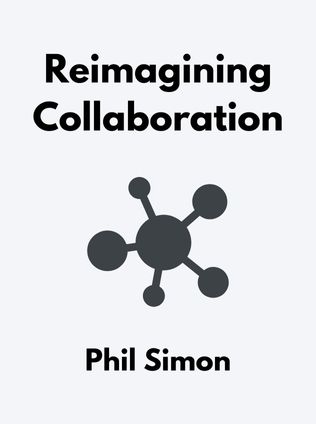
Reimagining Collaboration
Slack, Microsoft Teams, Zoom, and the Post-COVID World of Work
By Phil Simon
Published 12/2020
About the Author
Phil Simon is a renowned keynote speaker, technology expert, and a recognized authority on collaboration. He is a prolific author, having written eleven books, including the award-winning Reimagining Collaboration: Slack, Microsoft Teams, Zoom, and the Post-COVID World of Work. Phil Simon's insights have been featured in esteemed publications such as the Harvard Business Review, MIT Sloan Management Review, Wired, and The New York Times. He is also the host of the podcast Conversations About Collaboration, where he delves into the nuances of effective communication and teamwork in the modern workplace.
Main Idea
The central premise of Reimagining Collaboration is the introduction of a new model for workplace collaboration and communication. Phil Simon emphasizes the need for businesses to adopt a holistic approach to technology and business processes. The book advocates for the implementation of a hub-spoke model of collaboration, which integrates various applications without the need for coding. This model is designed to enhance efficiency, minimize rework, and improve overall communication within organizations. The book challenges readers to rethink their traditional business processes and adopt new habits and technologies to thrive in the post-COVID world.
Table of Contents
- Introduction
- Collaboration in Context
- The Benefits of Reimagining Collaboration
- Why Email Inhibits Collaboration
- Reimagining Workplace Technology
- The Hub-Spoke Model of Collaboration
- How to Select an Internal Collaboration Hub
- Why Collaboration Hubs Can Disappoint
- Reviewing Implementation Strategies
- Reimagining Business Processes
- Collaboration Killers and How to Handle Them
- The Myths of Collaboration
- Reimagining Communication and Human Resources
- Why Effective Collaboration Requires Lifelong Learning
- The Future of Collaboration
Analyzing and Explaining Each Idea and Sub-Content
Introduction
In the wake of COVID-19, many organizations were unprepared for the sudden shift to remote work. Phil Simon highlights that the world of work will not revert to its pre-pandemic state. Instead, remote work and the tools that facilitate it will become increasingly vital for business success. The book encourages readers to evaluate their current collaboration methods and consider how they might be limiting their potential.
Collaboration in Context
Effective collaboration requires a clear understanding of what collaboration truly entails. According to Simon, collaboration is not merely delegation or communication; it involves working together to brainstorm and solve problems, whether in person or remotely. Misunderstanding collaboration can hinder progress, as it is a multidimensional process that requires more than just the right tools.
Simon emphasizes that collaboration is not a one-size-fits-all concept. It varies depending on the context and the individuals involved. Effective collaboration requires a nuanced approach that considers the unique needs and dynamics of each team.
The Benefits of Reimagining Collaboration
Reimagining collaboration can bring numerous benefits, such as increased innovation, trust among employees, and improved retention of both customers and staff. Simon cautions against viewing collaboration as a cure-all but notes that organizations that collaborate effectively tend to be more transparent and productive. For instance:
- Enhanced creativity and innovation in product development.
- Strengthened trust and communication within teams.
- Improved employee and customer retention through better engagement.
- Greater organizational transparency and reduced workplace stress.
- Higher overall productivity compared to collaboration-challenged counterparts.
Simon argues that effective collaboration can transform workplaces into healthier, less stressful environments. He believes that firms that master collaboration will be better positioned to navigate future challenges and opportunities.
Why Email Inhibits Collaboration
Email, while once a primary tool for communication, has significant limitations that hinder effective collaboration. Simon argues that email introduces unnecessary friction, making it difficult for teams to work together efficiently. Email's design is not conducive to collaboration, often leading to siloed information and reduced productivity. He suggests that modern collaboration tools offer more streamlined and efficient alternatives.
Sign up for FREE and get access to 1,400+ books summaries.
You May Also Like
How To Win Friends and Influence People
The All-Time Classic Manual Of People Skills
By Dale CarnegieQuiet: The Power of Introverts
The Power of Introverts in a World That Can't Stop Talking
By Susan CainThe Lean Startup
How Today's Entrepreneurs Use Continuous Innovation to Create Radically Successful Businesses
By Eric RiesWho Moved My Cheese?
An Amazing Way to Deal with Change in Your Work and in Your Life
By Spencer Johnson, M.D.Make Your Bed
Little Things That Can Change Your Life...And Maybe the World
By William H. McRaven



















